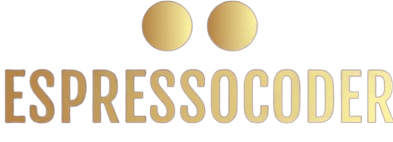When people search for “CPM et Moi”, they usually want to understand what CPM means, how it connects to them (“moi” being French for “me”), and why it matters in real-world contexts like business, digital marketing, project management, or personal financial understanding. In simple terms, CPM stands for Cost Per Mille (thousand impressions) in advertising, but it is also known as Critical Path Method in project management. The phrase “et moi” suggests how this concept interacts with an individual, business, or project. This article provides a comprehensive, 3000-word deep dive into the subject, covering definitions, practical applications, comparisons, challenges, and emerging trends that make CPM not just a technical concept but something directly relevant to everyday decision-making.
What Does CPM et Moi Mean?
The phrase combines two ideas:
- CPM: A well-established abbreviation with multiple interpretations depending on the domain.
- et moi: A French phrase meaning “and me,” suggesting personal relevance or involvement.
So, CPM et Moi can be understood as “How CPM relates to me personally or professionally.”
In practice, it addresses questions like:
- How do advertising costs affect my budget as a small business owner?
- How can project timelines be managed effectively with CPM tools?
- How do digital platforms measure and charge for visibility through CPM models?
Core Meanings of CPM
There are two dominant interpretations of CPM, both highly relevant:
1. CPM in Advertising: Cost Per Mille
- Definition: The cost an advertiser pays per 1,000 impressions of an advertisement.
- Relevance: This is the most common interpretation in digital marketing and social media advertising.
2. CPM in Project Management: Critical Path Method
- Definition: A project modeling technique developed in the 1950s to identify essential tasks and timelines in a project.
- Relevance: This meaning is crucial in industries like construction, software development, and event planning.
Why Is CPM Important for You (“et Moi”)?
Understanding CPM matters because:
- For advertisers: It helps you decide whether your campaigns are cost-effective.
- For project managers: It helps ensure projects finish on time and within budget.
- For individuals: Knowing how CPM works empowers you to analyze value in daily decisions, whether in marketing or personal projects.
Table: Comparison Between CPM in Advertising vs CPM in Project Management
| Aspect | CPM in Advertising (Cost Per Mille) | CPM in Project Management (Critical Path Method) |
|---|---|---|
| Definition | Cost per 1,000 ad impressions | Technique to schedule project tasks |
| Primary Use | Digital and traditional advertising | Project planning and execution |
| Metric Focus | Visibility, audience reach, ad cost | Time, resources, deadlines |
| Users | Marketers, advertisers, content creators | Project managers, engineers, planners |
| Example | Paying $5 for 1,000 ad views | Identifying tasks that delay entire project if postponed |
The Evolution of CPM
- Advertising Origins:
- CPM pricing models became standard in newspaper and TV ads long before the digital age.
- With the rise of the internet, it became the backbone of online ad billing.
- Project Management Origins:
- Developed in the 1950s by DuPont and Remington Rand.
- Provided a systematic way to manage increasingly complex industrial and engineering projects.
- Modern Expansion:
- In advertising, CPM has been reshaped by programmatic buying and AI-driven targeting.
- In project management, software tools like MS Project and Asana have embedded CPM algorithms.
CPM et Moi in Advertising
When you run a social media campaign, the platform often charges based on CPM. That means:
- If the CPM is $10, and you want 100,000 impressions, you’ll pay $1,000.
- It’s not about clicks or engagement directly, but about visibility.
Why It Matters:
- For a small business, CPM reveals how much visibility your money can buy.
- For an influencer, it determines how advertisers evaluate the worth of your audience.
Challenges:
- High CPM doesn’t always mean better results.
- Visibility doesn’t guarantee conversions.
CPM et Moi in Project Management
In project planning, CPM helps identify the critical tasks without which the project cannot progress.
Example:
- Building a house has many steps. Some, like painting, can be delayed without affecting the final completion date. Others, like laying the foundation, directly impact the entire timeline. CPM helps you map these dependencies.
Why It Matters:
- For managers, it minimizes delays.
- For individuals planning personal projects (like weddings or home renovations), it creates clarity on deadlines.
Challenges:
- CPM can oversimplify by focusing only on time, ignoring quality or budget constraints.
Practical Applications of CPM et Moi
- Advertising Campaigns
- Budgeting: Deciding whether to invest in CPM, CPC (cost per click), or CPA (cost per acquisition).
- Strategy: Testing different audiences to lower CPM while maintaining reach.
- Personal Freelancing
- Understanding CPM helps freelancers price projects correctly, especially if they deal with ad revenue.
- Corporate Projects
- Critical Path Method ensures large-scale projects like highways or software systems stay on schedule.
- Everyday Life
- Even household projects benefit from CPM thinking: What tasks must be finished first to avoid delays?
CPM vs Other Metrics
- CPM vs CPC: CPM charges for impressions, CPC charges only when people click.
- CPM vs CPA: CPA focuses on completed actions (like purchases), making it riskier but often more rewarding.
- CPM vs PERT: In project management, CPM is deterministic (fixed times), while PERT handles probabilistic timelines.
Advantages of CPM et Moi
Advertising CPM
- Predictable budgeting.
- Easy to measure audience exposure.
Project Management CPM
- Clear visibility of task dependencies.
- Better risk identification.
Limitations of CPM et Moi
- In advertising:
- CPM doesn’t guarantee engagement.
- Can be costly in competitive industries.
- In project management:
- Ignores flexibility in real-world execution.
- Doesn’t account for resource constraints.
Future of CPM et Moi
- In Advertising:
- AI and machine learning will optimize CPM-based bidding.
- Expect more transparency in ad visibility metrics.
- In Project Management:
- Integration with predictive analytics.
- Smarter tools that balance time, cost, and quality simultaneously.
- For Individuals (“et Moi”):
- CPM awareness will be essential for freelancers, entrepreneurs, and creators in the digital economy.
Frequently Asked Questions (FAQs)
1. What does CPM et Moi mean in simple words?
It means understanding how the concept of CPM—whether in advertising or project management—affects you personally or professionally.
2. Is CPM only about advertising?
No. While CPM often means “cost per mille” in marketing, it also stands for “critical path method” in project management.
3. Why is CPM important for me as an individual?
Because whether you’re running ads, managing a project, or simply trying to save time and money, CPM helps you make informed decisions.
4. Which is better: CPM, CPC, or CPA?
It depends on your goals. CPM is best for visibility, CPC for traffic, and CPA for conversions.
5. How do I apply CPM in my personal life?
Use CPM thinking to prioritize tasks in personal projects, ensuring you finish on time and reduce stress.
Conclusion
The phrase “CPM et Moi” might appear technical, but it carries real-world significance. Whether you’re a small business experimenting with ad campaigns, a project manager steering a large initiative, or simply someone trying to optimize personal tasks, CPM provides a framework for smarter decisions. It’s not just about numbers or charts—it’s about visibility, time, and how these resources connect directly to “moi,” or you.







